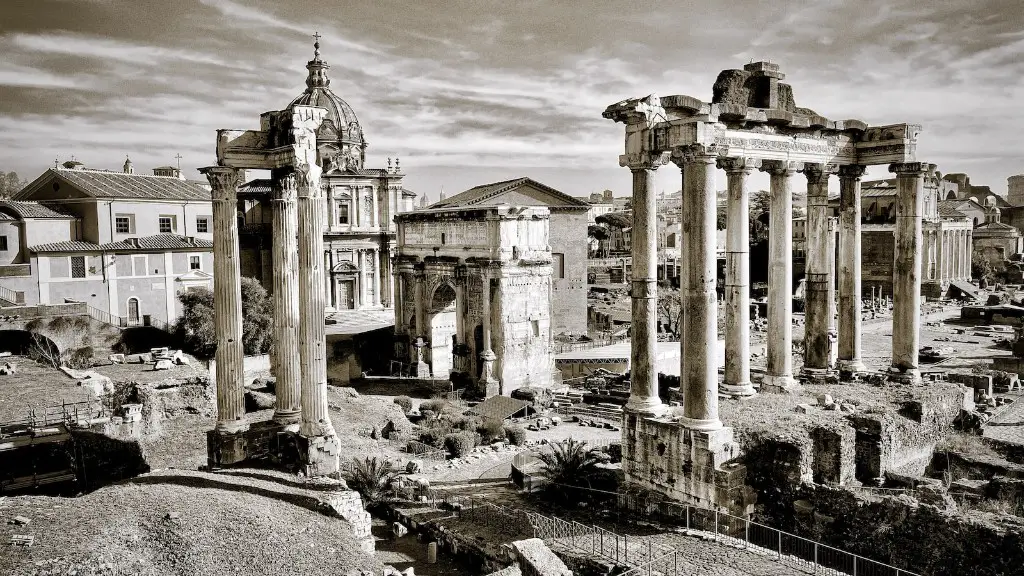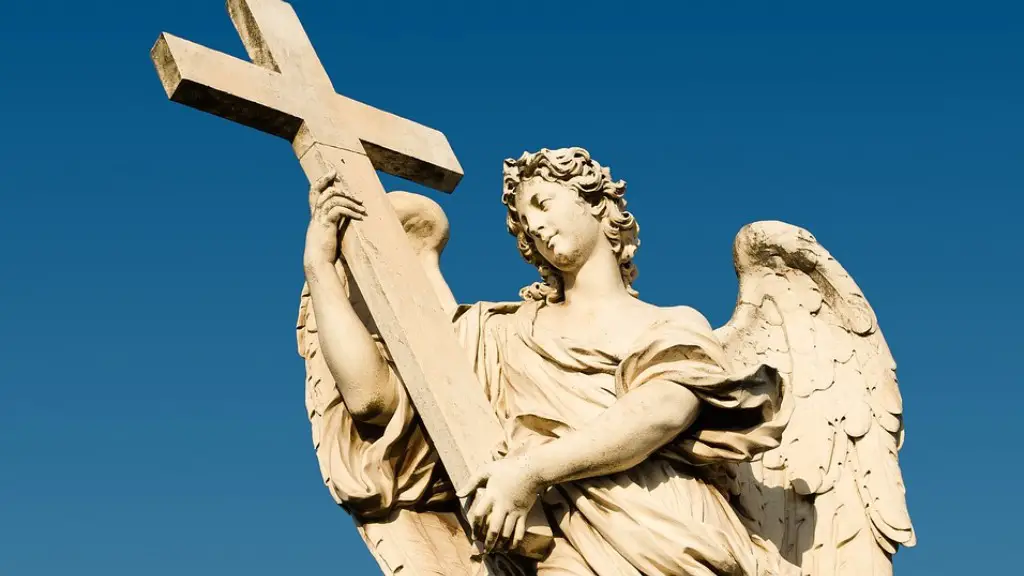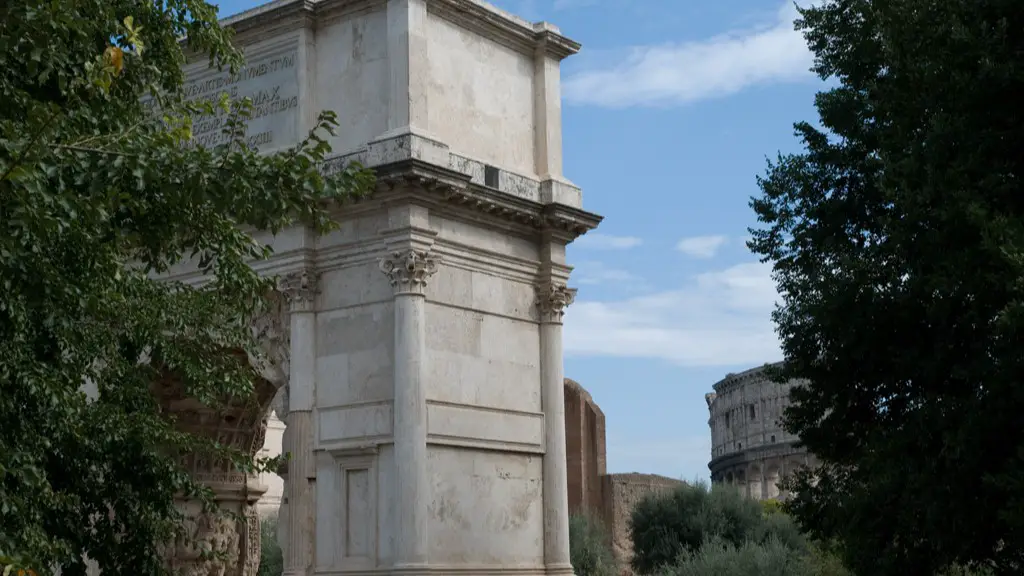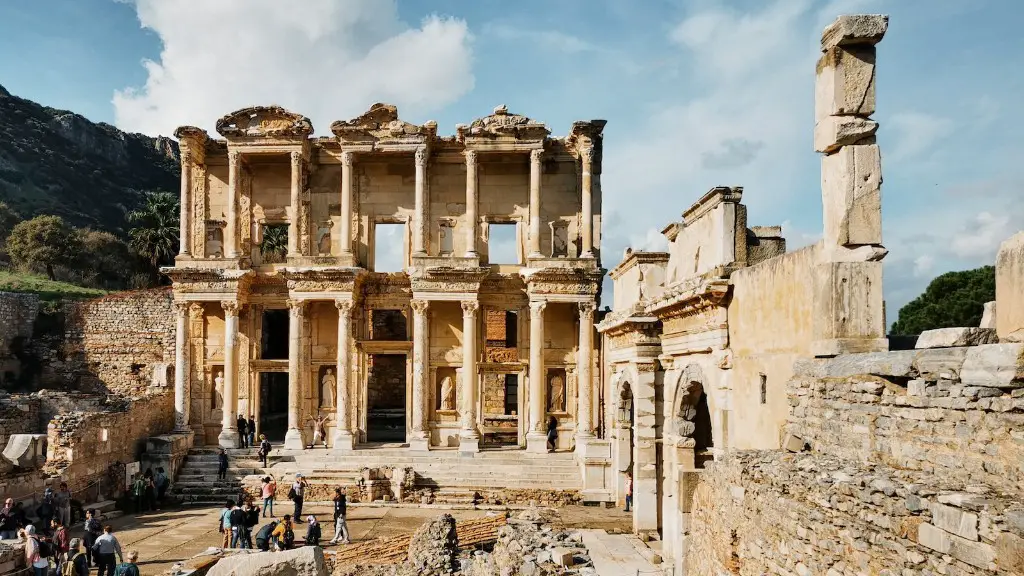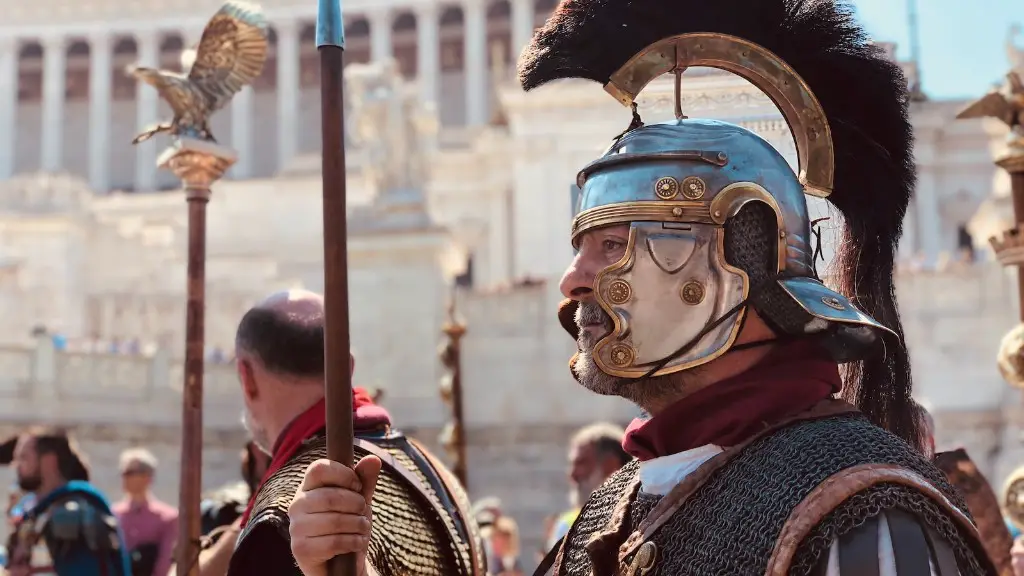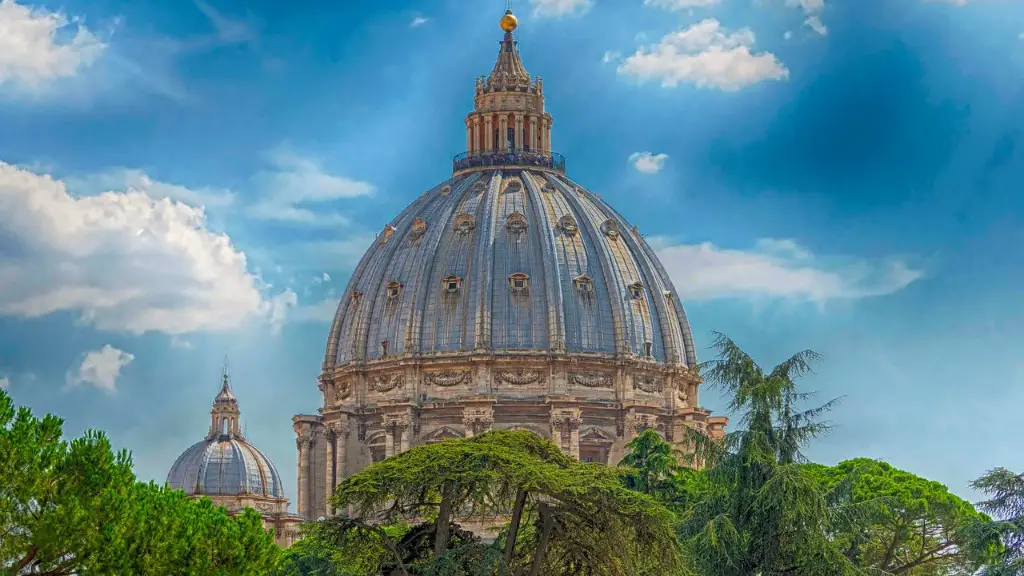In Ancient Rome, the Senate met in an official building known as the Curia Julia. The building was designed and constructed by Julius Caesar after the burning of the original Curia Cornelia during a rebellion. The Curia Julia was used by the Senate in Rome, while they also had a meeting place at Pompey’s theater. The Senate also held meetings outside of Rome, but the Curia Julia remained the main site of the Senate.
The purpose of the Senate in Rome was to provide a place in which leaders of the government could gather and make decisions. In Ancient Rome, it was the most powerful group in the government and it made decisions regarding the government, and foreign and domestic policy. It was composed of elected officials and could pass laws, levy taxes, declare war, and depose the emperor.
The building of the Curia Julia was designed with intricate mosaics and a large hall. It was located on the Senate House hill and was a large, imposing structure. The building was fluted and had a large central dome. It was also equipped with a podium for the Senate president and benches for the senators. Inside it had a large library filled with books, scrolls, and other documents.
When the Senate met in the Curia Julia, the senators would assemble and discuss a variety of topics. Discussions ranged from political to religious matters. As the Senate evolved over time, its structure and purpose changed as well. During the Republic, it was primarily concerned with the election of officials and the passing of laws. During the Empire, the Senate was an advisory body, where the emperor would consult with senators on matters of government.
The meetings of the Senate were typically open to the public and could draw large crowds. Citizens of Rome would often attend the meetings to hear the debates and learn about the decisions made by their leaders. They also had the opportunity to interact with the senators and ask questions or express their opinions on the matters discussed.
The Senate played a major role in the functioning of the Roman society and in its history. It was a powerful body and one of the most influential groups in the Roman Empire. During the Roman Republic, it was the ruling body and the major decision-maker in the government. Throughout its existence, the Senate was an important part of the government in Ancient Rome.
Architectural Significance
The Curia Julia was an impressive architectural feat. The building was constructed out of marble and decorated with mosaics. It was a significant building in terms of its size, architecture, and age. Along with being an important meeting place for the Senate, it was also a symbol of power and influence for the Roman Empire.
In addition to its political significance, the Curia Julia was also an important architectural landmark. It was built in the style of the ancient Roman temples and featured a large, central dome supported by fluted pillars. It also had a rectangular porch and a podium for the Senate president. The structure was covered in marble and featured intricate mosaics and decorative elements.
The building of the Curia Julia was an impressive feat of engineering and design. It was a symbol of the legislative power of the Senate and the strength of the Roman Empire. Its construction and design were an important part of Roman history and a testament to the architecture of the period.
Legacy
The legacy of the Senate and its meetings in the Curia Julia are still present today. When the Senate meets in Rome, they still meet in its official building. The building is also a popular tourist attraction as visitors can take tours of the building and its surroundings. The Senate of modern times continues to meet in the same building, a testament to its historical and architectural importance.
The Senate of the Roman Republic was a powerful entity and it shaped the government and politics of the time. Its legacy still lives today. It is still seen as a symbol of political power and influence and it is a reminder of the importance of democracy and political discourse.
The Curia Julia is also a reminder of the importance of architecture in creating a structure for a society and a government. Its design was an impressive feat of engineering and design and it is a testament to the architecture of the period. The Curia Julia continues to be seen as an important cultural and architectural landmark of Rome.
Study of Ancient Rome
The study of the ancient Roman Senate and its role in the government is a fascinating area of study. Its history and its importance in shaping Rome and its government are still studied today. Its legacy continues to be seen in the modern world and it is an important part of the history of democracy and political discourse.
The study of the ancient Roman Senate provides insight into the political culture of the period. It also gives a better understanding of the structure and functions of ancient Roman government. The study of the Senate also sheds light on the intricacies of the Roman social structure and its influence on the decisions and actions of the Senate.
The study of Roman government and its Senate is an important way to increase understanding of democracy and the importance of political discourse. The study of the Senate helps to understand the importance of dialogue and debate in political decision-making. It also provides a better understanding of the importance of being able to adapt and respond to changing circumstances.
The study of the Roman Senate and its role in the government of Ancient Rome is an important aspect of history. The legacy of the Senate and its meetings at the Curia Julia is still present today and its importance in the history of Rome and its government is still studied today.
The Senate Today
The legacy of the Roman Senate can be seen in the modern world today. The idea of gathering people together in a room to debate and discuss political matters is still practiced today. The Senate of modern times, although not as powerful as it was during the Roman period, still holds the same significance and importance.
Today the Senate in the United States is the legislative body of Congress. Just as the Senate of Ancient Rome, it is an upper chamber of Congress and is considered to be one of the most powerful bodies of government. The Senate continues to be an important part of modern government and political affairs.
The Senate is composed of 100 senators, two senators from each state. Each state has two senators that represent the state and introduce and debate legislation in national policy. The Senate continues to provide a forum for political debate and discussion and it is considered an integral part of the government and its process.
The Senate today plays an important role in the shaping and implementing of laws. It has the same purpose and significance as the Roman Senate- to debate and pass legislation and to provide a forum for leaders to discuss and make decisions on important matters of state. It is an essential part of any functioning government.
Global Significance
The legacy of the Senate and its meetings in the Curia Julia are still present today. As the Senate is an important part of government, its legacy is seen in countries around the world. Many governments have adopted a similar structure for their own governments which allows for a similar system of political representation and debate.
The Senate of Ancient Rome is a reminder of democracy and its merits. Its legacy and importance are still present today and it still plays an important role in the functioning of governments around the world. Its legacy and its lessons can still be seen in the modern world.
The Senate of the Roman period is an important part of history. It was a powerful body and a major decision maker in the government. Its legacy still lives today in many countries and its importance in the foundation of democracy is still seen today. The Curia Julia is a reminder of its importance in the government of Ancient Rome and its significance continues to be felt in the modern world.
